site search
online catalog
LIGHT ARTILLERY OFFICER’S SABER PRESENTED TO CAPT. G.B. FORBES BY THE ATLANTA ARTILLERY 1890

Hover to zoom

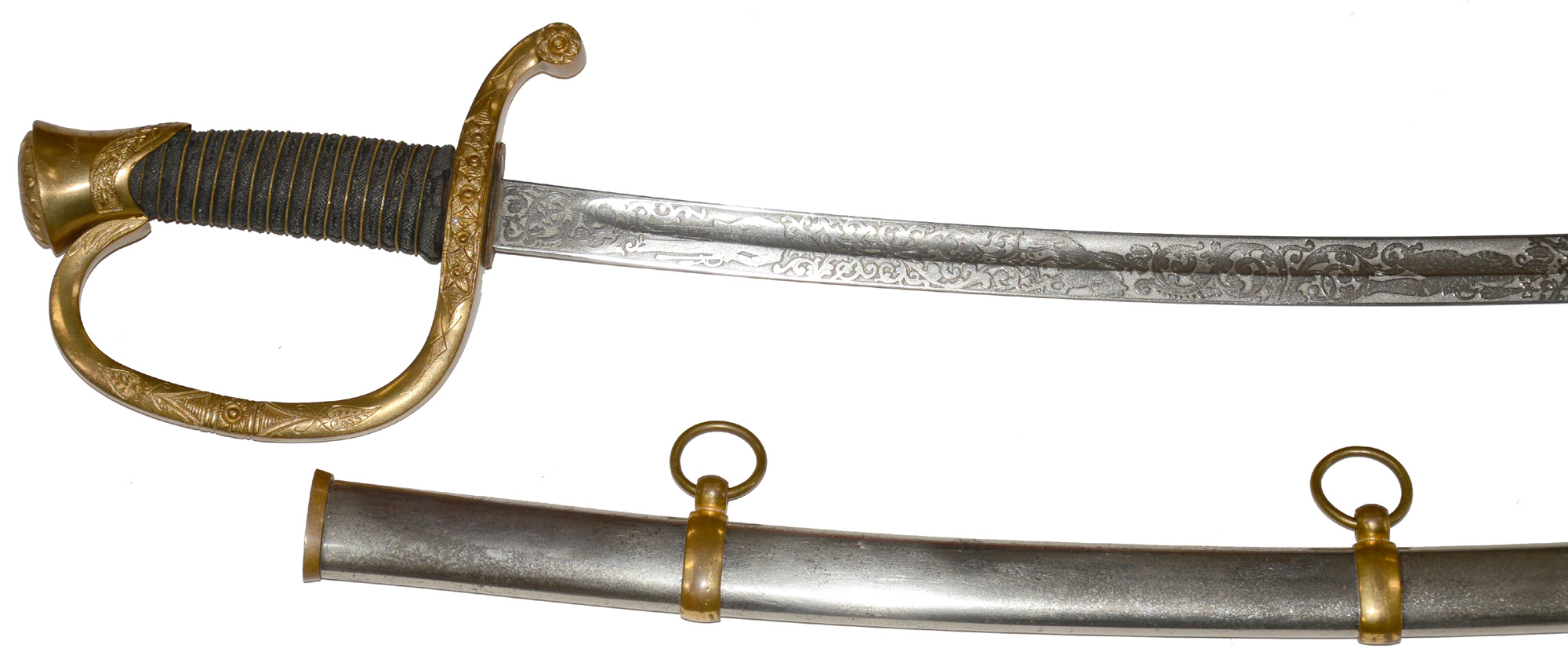

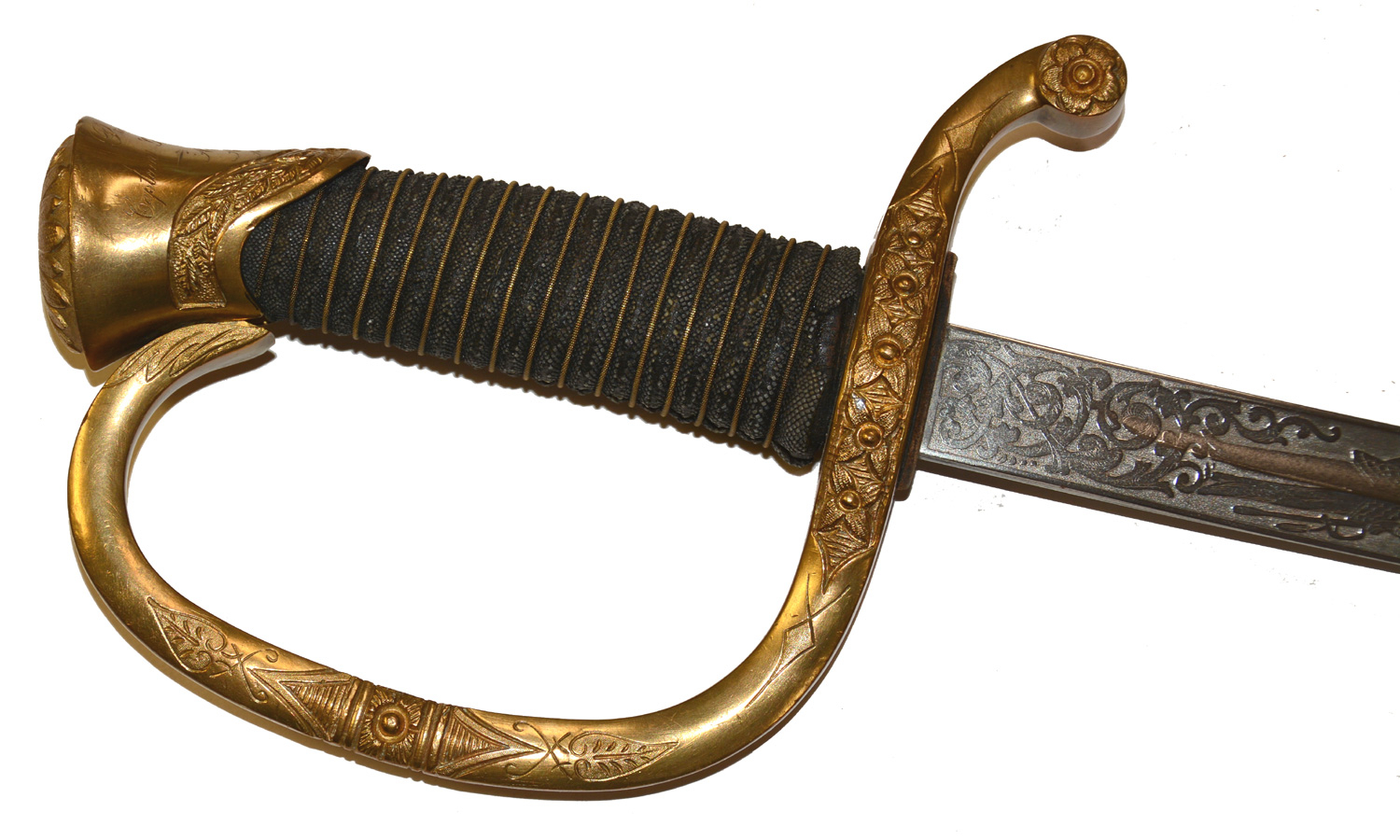
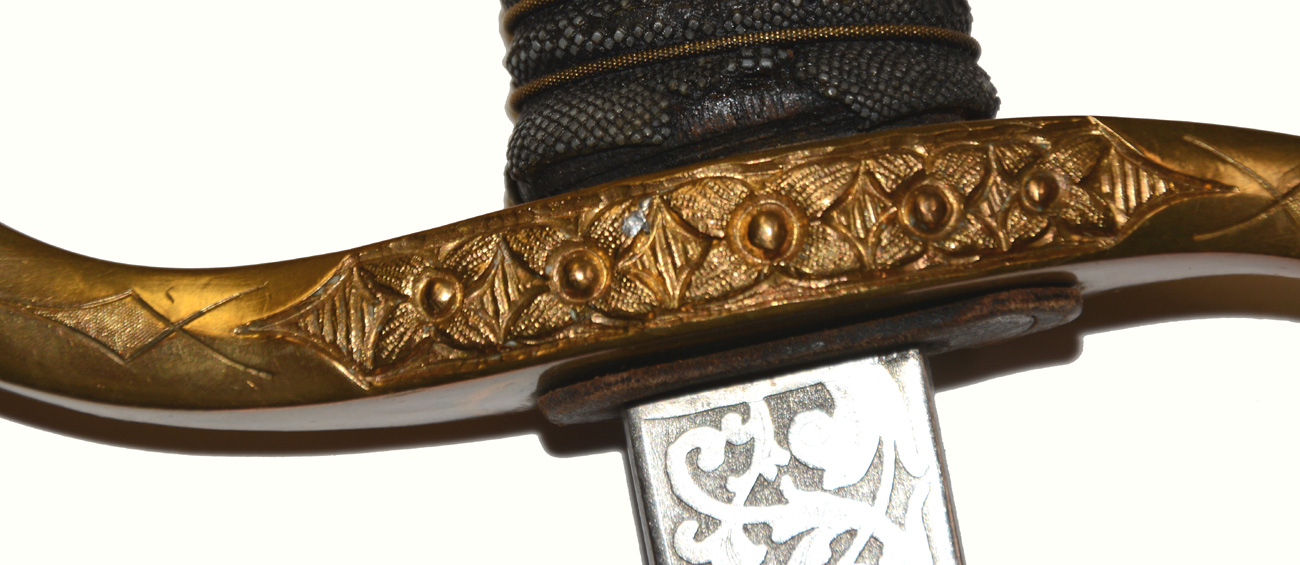
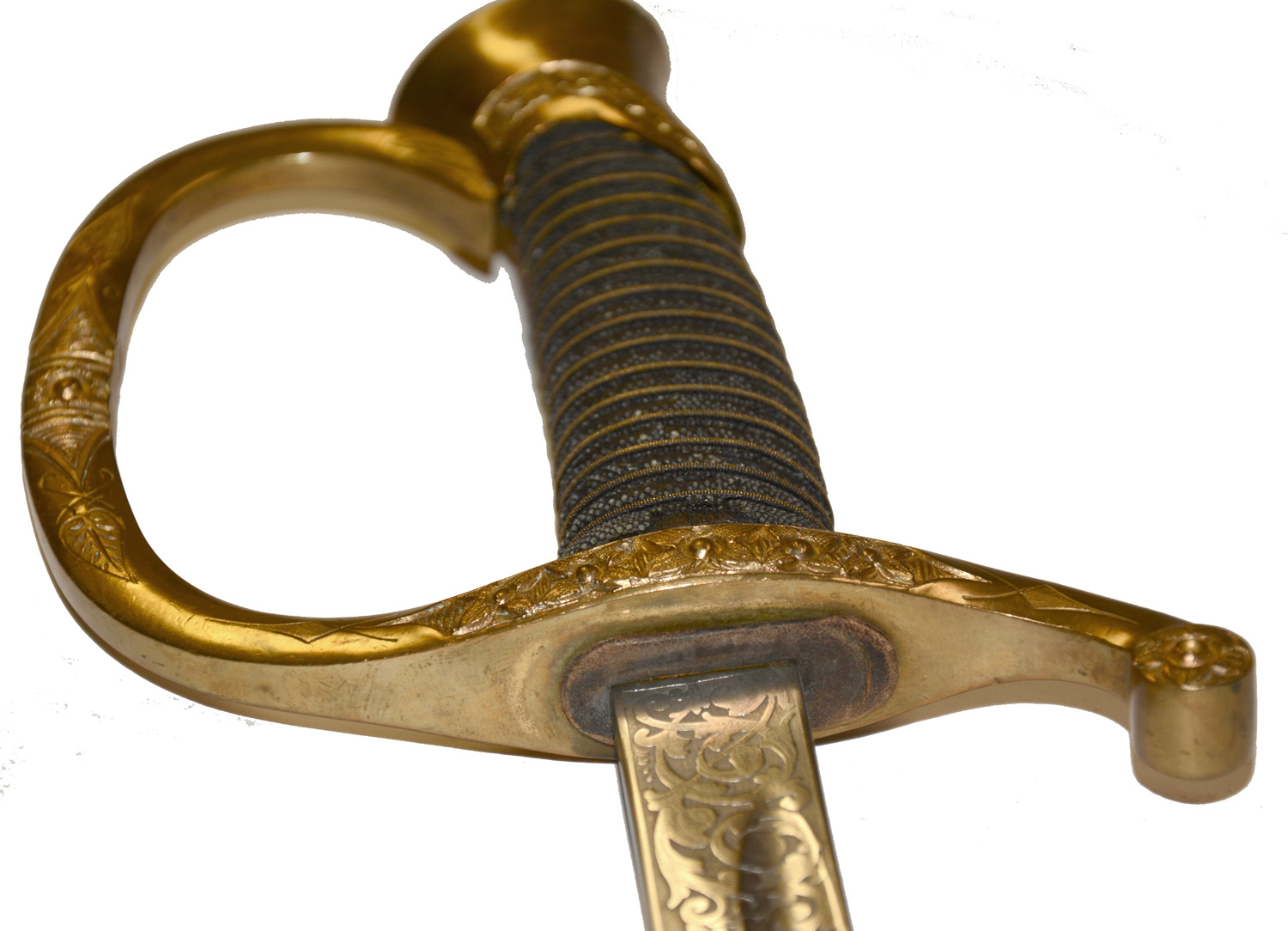
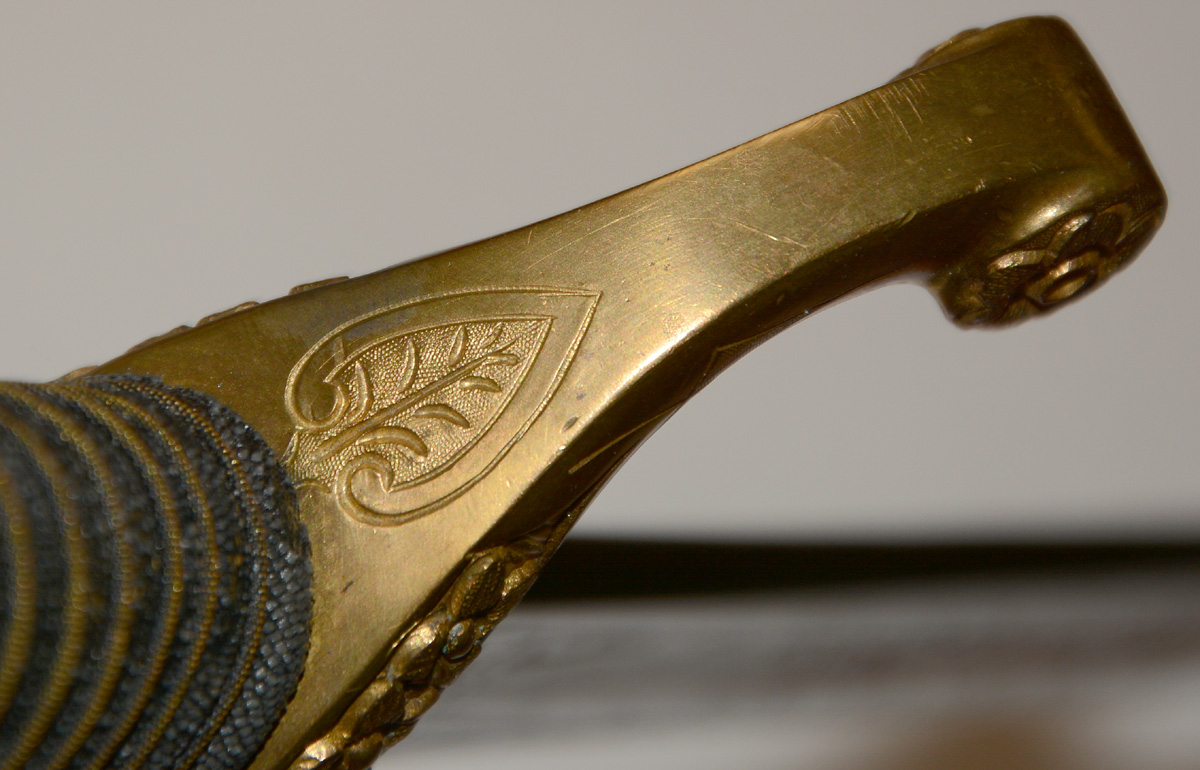
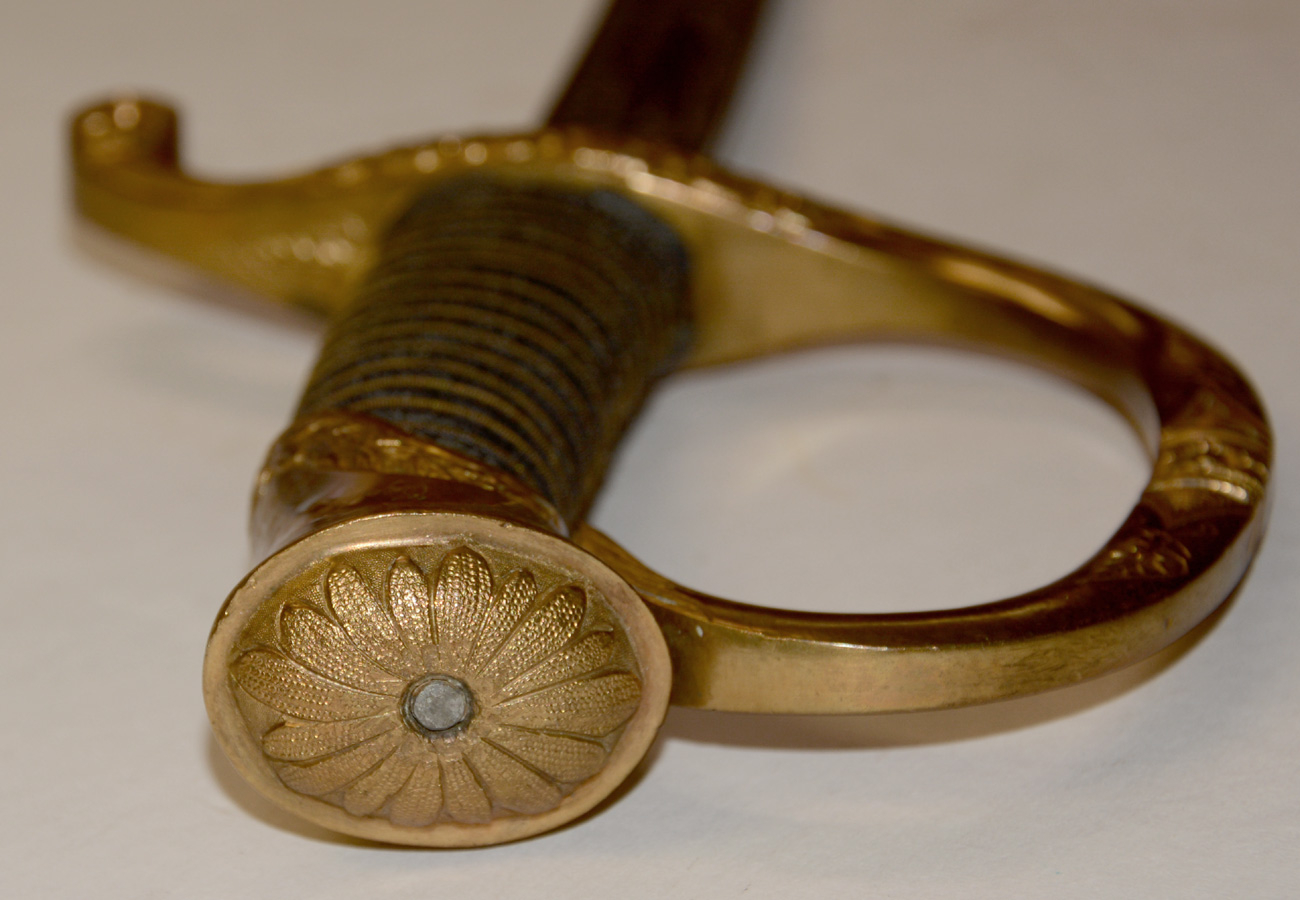
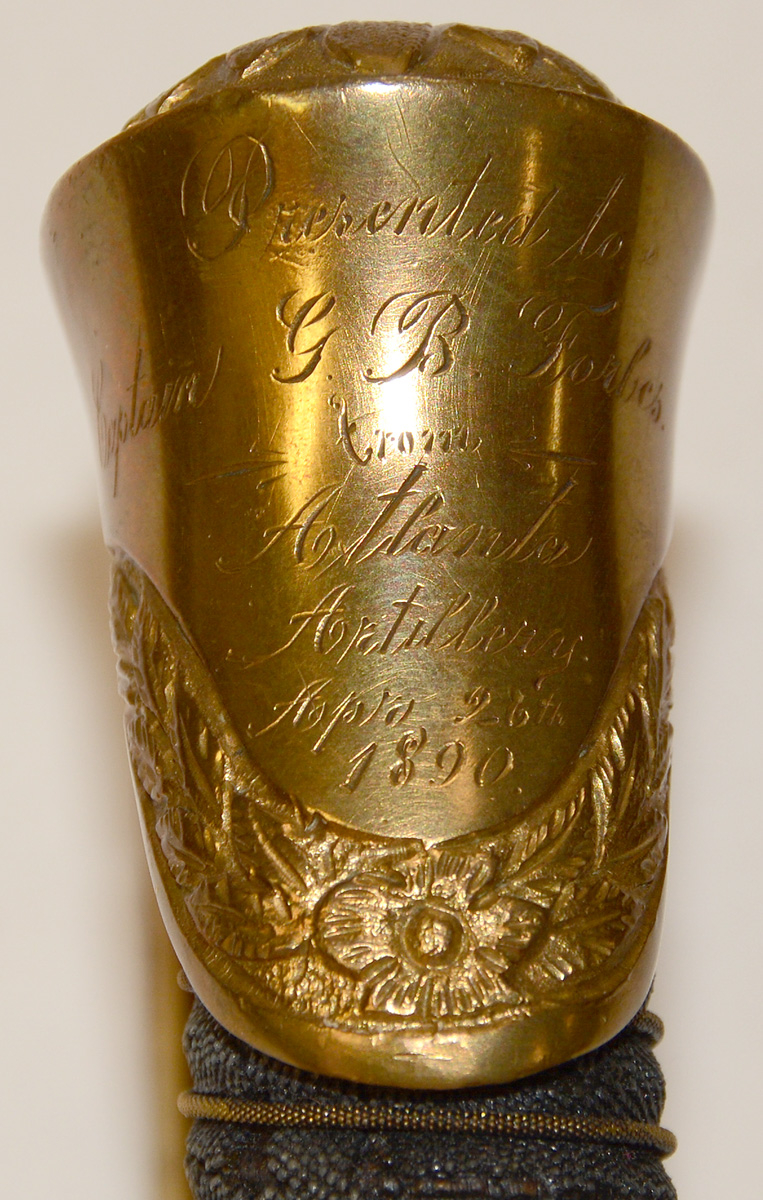
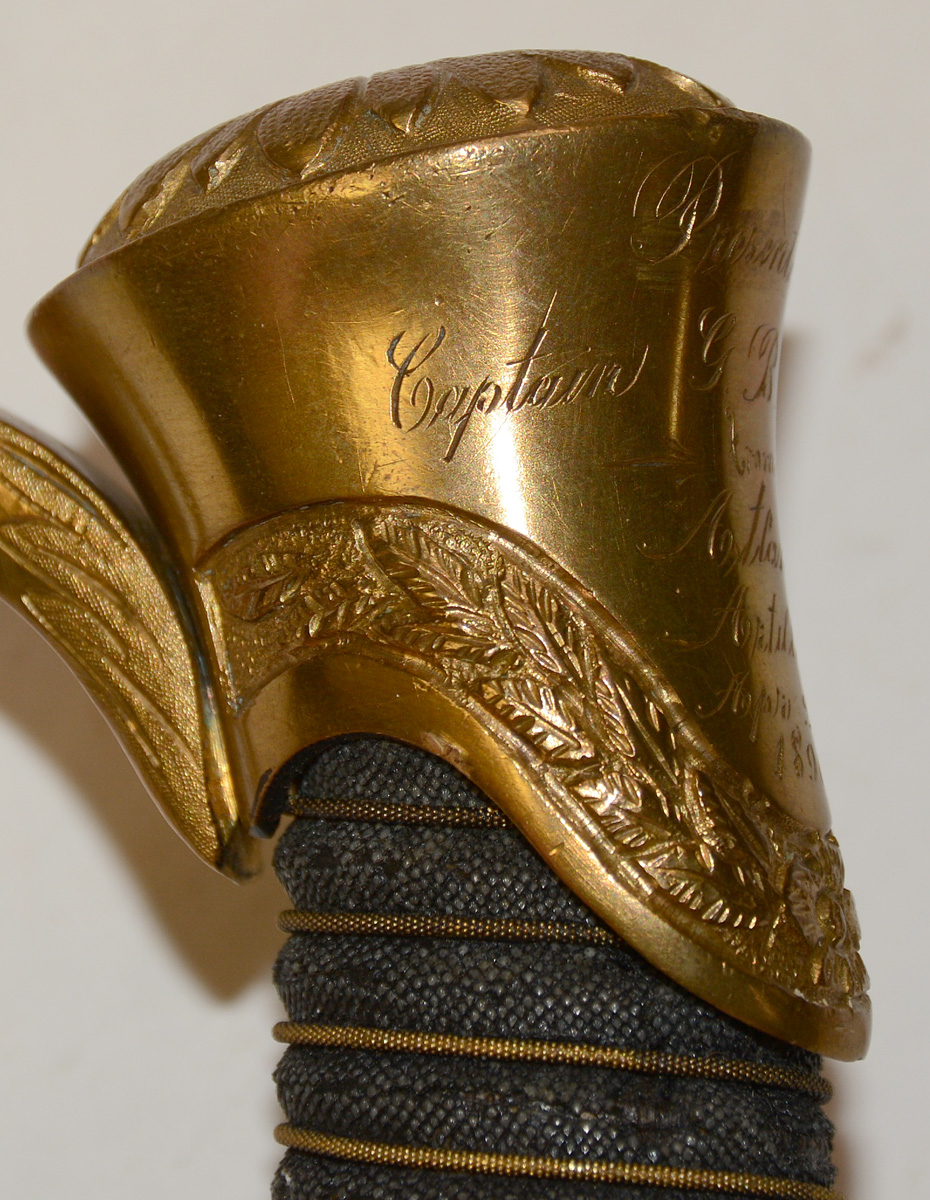
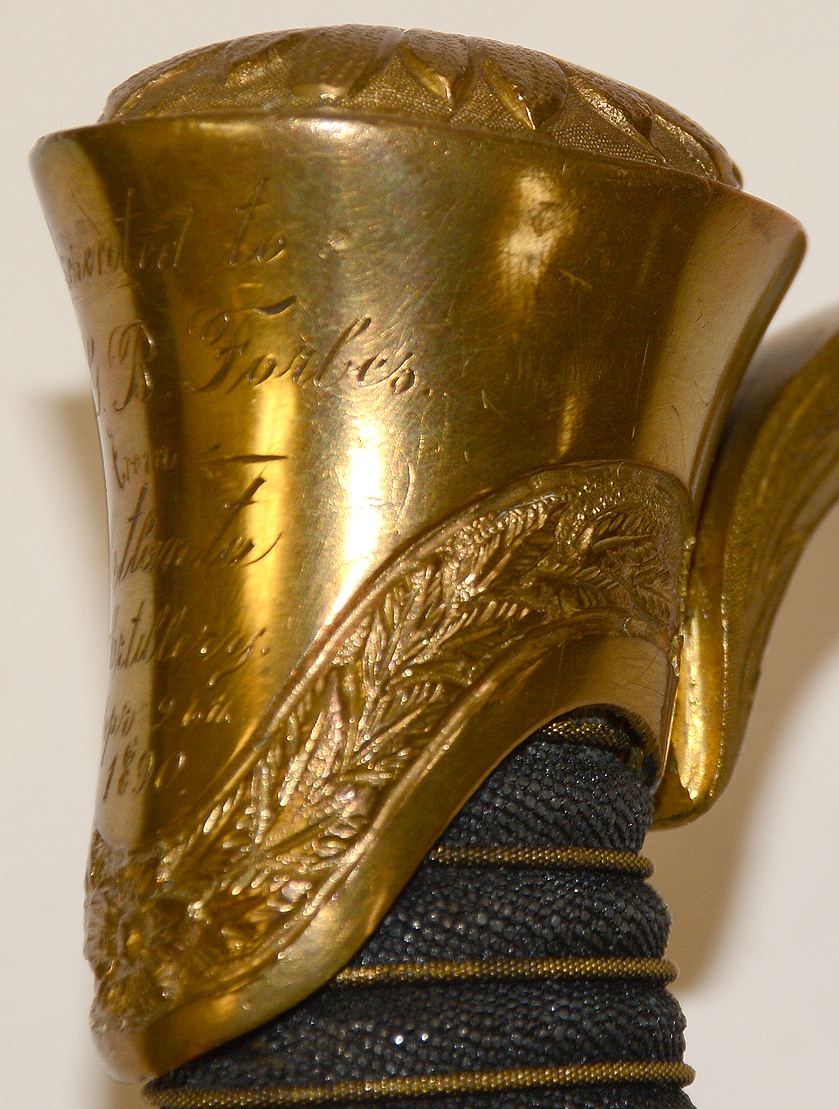



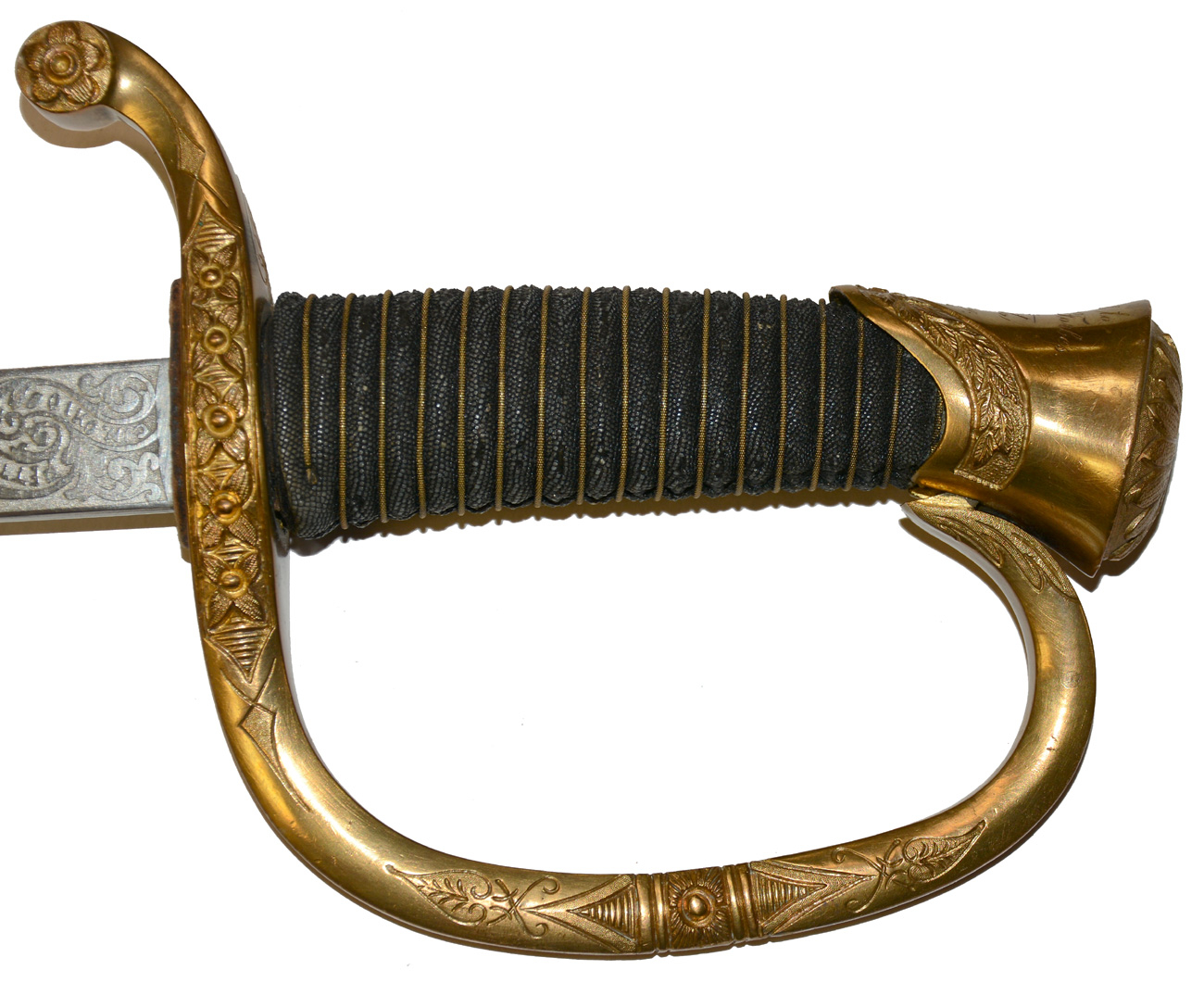
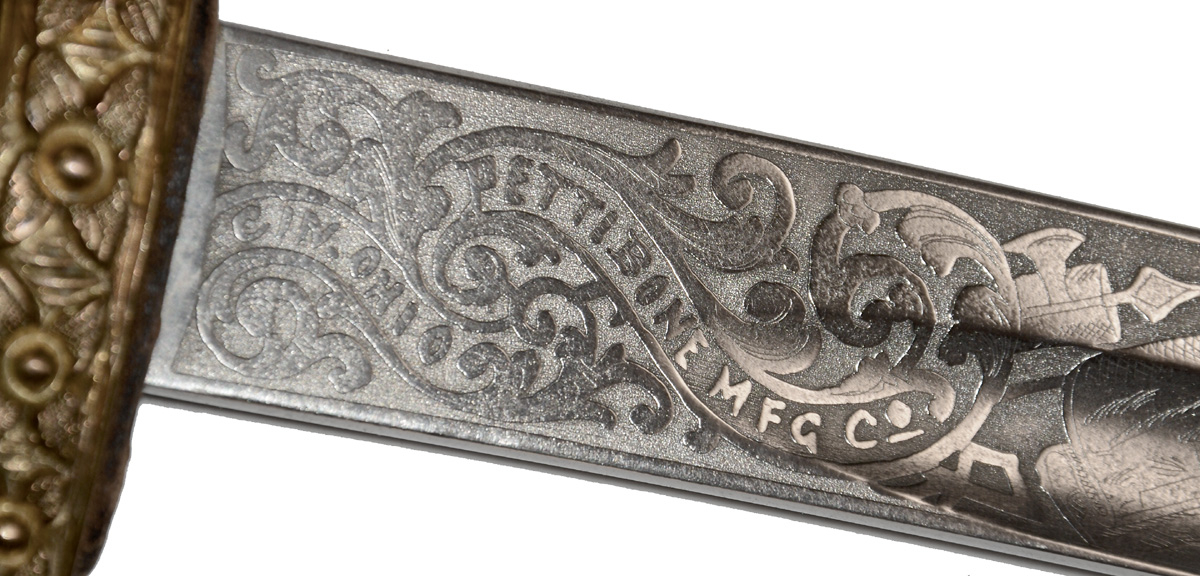



$1,250.00 SOLD
Quantity Available: None
Item Code: 870-233
This is an interesting use of the earlier Model 1840 light artillery officer’s saber in lieu of the newer U.S. regulation pattern of 1872. That more current sword used a reverse-P guard, perhaps a bit old fashioned, but with a much lighter blade. This uses a lighter and thinner blade, but with the gilt brass 1840-style guard with low-domed pommel and single knucklebow ending in with a quillon disk. The scabbard is naturally narrower to match the blade and follows postwar style with a plated steel body with brass mounts. The decoration of the hilt and the blade is also more elaborate and denser than wartime versions.
The pommel retains the early leaf border, but adds a raised spray of leaves or petals to the pommel cap. The wire-bound sharkskin grip is the older style and the knucklebow retains the rosette on the quillon disk, but instead of a simple narrow band and symmetrical fans of leaves midway down, it uses broader abstract triangles, crossed flower stems and a leaf on either side of central point, and then repeats it along the crossguard.
The narrow, curved blade is densely etched with floral scrolls, amid which appear on the obverse a modern officer with kepi and sword, but also two mounted knights and a man-at-arms on foot with a halberd, along with a panoply of arms. The reverse has a central U.S., flanked above and below by a repeated panel showing a knightly figure on foot with raised sword, two mounted figures charging at one another, and a display of arms.
The reverse has an etched, “Pettibone Mfg. Co. Cin. Ohio” maker address. James Pettibone bought the “fancy goods” business of John Boner in Cincinnati about 1872 and renamed it the Pettibone Mfg. Co. about 1878. They dealt in regalia, lodge supplies, and military goods, selling to the national guard in many states as well as foreign governments. The use of the “old regulation” pattern for this presentation may be significant: the face of the pommel is engraved on the front above the leaf border, “Presented to / Captain G.B. Forbes / from / Atlanta / Artillery / Apr. 26 / 1890,” which was, “Confederate Memorial Day” in the city. The recipient, George B. Forbes, was involved in organizing it as a member of the military committee and led the battery, two guns and forty men, in the parade and in the firing of various salutes. Forbes had moved to Atlanta from LaGrange about 1881, joined the battery on its formation as their first lieutenant in 1886, and in December 1887 was elected captain.
Forbes had wartime experience in the artillery, serving as first sergeant and sergeant major (and by some reports, though not his records, rising to lieutenant) in the Columbus Light Artillery. The unit served in the western theater, as part of the Dept. of South Carolina, Georgia, and Florida; the Dept. of the West; Dept. of Mississippi and East Louisiana; the Army of the Mississippi and the Army Tennessee. Originally a light battery, they were reportedly mounted to serve as horse artillery, and we find them in Jackson’s Cavalry Division of Lee’s Cavalry Corps from December 1863. They finished the war as part of Clinch’s Brigade in the Dept. of Alabama, Mississippi and E. Louisiana, though his surrender and parole records list the unit as Young’s Light Battery, Williams’ Battalion, Smith’s Brigade. Forbes’s service record indicates he enlisted for the war in November 1861 and served throughout, with only one reference to him being sick, but still present, in April 1862 and home sick on a furlough for ten days in March-April 1863. He surrendered with the battery as part of General Richard Taylor’s surrender to Canby on May 4, 1865, and was paroled May 11. We expect his military background and the occasion of the presentation played a part in selecting the 1840 pattern for the saber since it was used by both U.S. and C.S. forces during the war.
Forbes returned to LaGrange and from 1881 worked as book-keeper in Atlanta before obtaining a position in the county and then city clerk’s office. He died there in June 1896 and was interred back in LaGrange.
The condition of the sword is excellent. The hilt retains lots of gilt finish. The sharkskin grip is very good and the binding wire is in place. The blade is bright and the etching vivid. The scabbard shows a bit of light freckling, but is bright overall and the mounts have good color, with the upper band showing some rubbing since it is the natural place to grab the sword. [sr] [ph:L]
~~~~~~~~~~~~~~~~~~~~~~~~~~~~~~~~~~~
THIS ITEM, AS WITH ALL OTHER ITEMS AVAILABLE ON OUR WEB SITE,
MAY BE PURCHASED THROUGH OUR LAYAWAY PROGRAM.
CLICK HERE FOR OUR POLICIES AND TERMS.
THANK YOU!
Inquire About LIGHT ARTILLERY OFFICER’S SABER PRESENTED TO CAPT. G.B. FORBES BY THE ATLANTA ARTILLERY 1890
Most Popular
Historical Firearms Stolen From The National Civil War Museum In Harrisburg, Pa »
Theft From Gravesite Of Gen. John Reynolds »
Selection Of Unframed Prints By Don Troiani »
Fine Condition Brass Infantry Bugle Insignia »
Large English Bowie Knife With Sheath 1870’S – 1880’S »
Imported (Clauberg) Us Model 1860 Light Cavalry Officer's Saber »
featured item
CONFEDERATE ENLISTEDMAN'S ARTILLERY SHELL JACKET
This is a very fine identified Confederate shell jacket, allegedly worn by Private Edwin F. Barnes, 1st Company, Virginia Howitzers, Light Artillery, the famous Richmond Howitzers. Barnes initially enlisted April 1861, in Co. H of the 15th Virginia… (2025-1796). Learn More »


